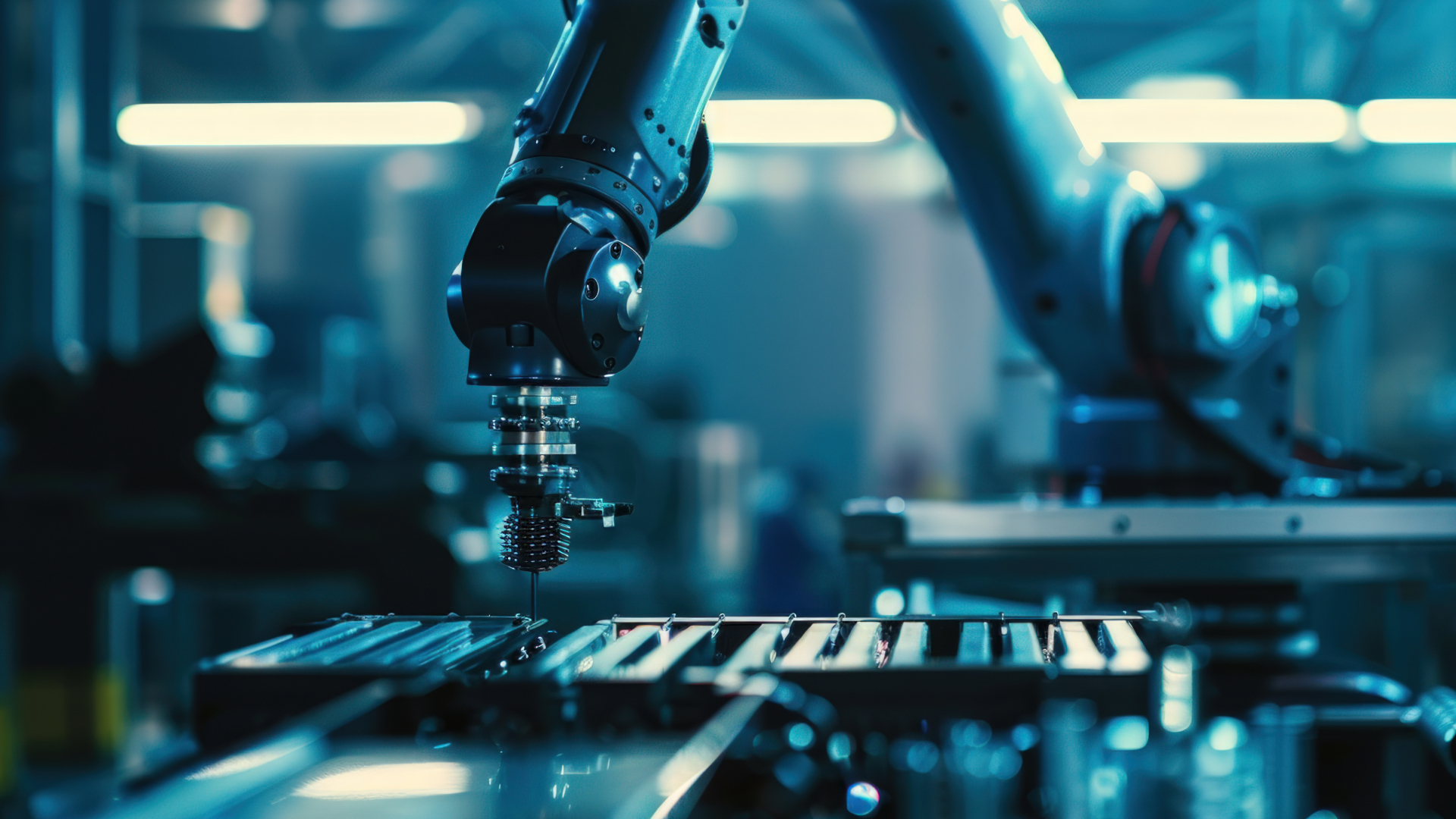Unlocking $1 Trillion in New Revenue: Asset Monetization & Servitization's Impact on Manufacturing
Servitization alone could generate $1 trillion in additional revenues for global manufacturers by 2030, according to McKinsey. It's why manufacturers are looking to do more than just produce and sell products.

The shift to asset monetization and servitization is one of the most significant trends transforming manufacturing today.
Servitization alone could generate $1 trillion in additional revenues for global manufacturers by 2030, according to McKinsey.
In manufacturing, the focus is no longer just on producing and selling products. Companies are seeking opportunities for growth and revenue by integrating services into their offerings—a process known as asset monetization and servitization (AM&S).
As someone who has spent years helping businesses navigate this transition, I believe that AM&S holds the key to long-term success for manufacturers, opening the door to innovative business models and deeper customer relationships.
The Shift from Selling Products to Offering Solutions
At the heart of asset monetization and servitization lies a simple yet powerful idea: shifting from selling standalone products to offering integrated solutions. This transition enables manufacturers to not only sell their physical assets, but also to bundle them with value-added services that address customer needs more comprehensively.
When I think about this transformation, it reminds me of mining gold. You already sold the gold—your products—but AM&S is the strategy that allows you to continue to mine the gold, creating something far more valuable.
Through servitization, manufacturers can offer a holistic experience that includes installation, maintenance, and upgrades, while asset monetization unlocks new revenue streams by leveraging underutilized resources like equipment, real estate, or even data.
But this isn’t just a business strategy—it’s a paradigm shift. You’re no longer focused solely on creating and selling a product. Instead, you're delivering a solution that meets the needs of your customers in a more complete, ongoing way.
The Value of Asset Monetization for Manufacturers
One of the key drivers of this change is the realization that assets don’t just have to sit idle. Asset monetization is about finding new ways to turbocharge the assets, attaching them to revenue-generating opportunities. From leasing machinery to selling data insights, the opportunities are vast.
In my experience, manufacturers often overlook the hidden potential in their existing assets.
Take a look around your business—there’s value waiting to be unlocked. Are there pieces of equipment that could be rented out during off-peak times?
Do you have data that could be monetized and sold to third parties? Could you shift from selling a product to offering it as a service? These are the questions we ask during our asset monetization workshop, and the answers can expose strategies that can have significant impact on your bottom-line.
Servitization: Creating Value Beyond Products
Servitization is about rethinking what you offer your customers. Instead of just delivering a product, you’re providing a complete service that ensures their needs are met over the long term. It’s a model that aligns with the shift toward the circular economy, where customers aren’t just purchasing products—they’re purchasing outcomes.
For example, rather than selling a machine outright, you could offer it “as a service”. Take for instance selling tires to a truck fleet. You sell a “pay-per-mile tire service”. Rather than selling tires outright, you can offer tires on a usage basis, where customers pay based on the distance driven.
This service could also include tire maintenance and replacement. The outcome would be that operators can manage their cash flow more effectively by aligning tire costs with actual usage, while the manufacturer benefits from long-term customer relationships and continuous service revenue.
This example not only provides a recurring revenue model, but also strengthens relationships with customers. In addition, by staying connected through ongoing service agreements, you’re able to collect data on product performance, offer predictive maintenance, and ensure that the product is always operating at peak efficiency.
This creates a win-win scenario: customers get better performance and lower upfront costs, while manufacturers generate steady income and build long-term relationships.
Key Benefits of Asset Monetization and Servitization
The benefits of adopting an AM&S strategy are clear.
First and foremost, it creates new revenue streams. But beyond that, it helps you build stronger, longer-lasting relationships with your customers.
By providing ongoing services, you stay connected to your customers throughout the lifecycle of your product, learning more about their needs and gaining valuable insights that can inform future product development.
Here’s what I’ve seen firsthand.
Increased Revenue
Monetizing underutilized assets and offering services allows manufacturers to unlock new sources of income. This not only improves profitability but also adds value to the customer relationship.
Improved Customer Engagement
With servitization, manufacturers maintain a continuous relationship with customers, offering end-to-end solutions that foster loyalty and long-term engagement. Customers no longer just buy a product—they invest in a comprehensive solution that evolves with their needs.
Capital Efficiency
Asset monetization allows you to free up capital by selling or leasing non-core assets, making it easier to reinvest in more strategic areas of your business. This gives you the flexibility to innovate and stay ahead of the competition.
Enhanced Product Performance
By offering services alongside products, manufacturers can ensure that their assets are always performing optimally. This reduces downtime, improves reliability, and enhances the overall customer experience.
Data-Driven Insights
Servitization enables manufacturers to collect and analyze data from the products and services they offer. This data can be used to optimize product performance, drive innovation, and create personalized customer experiences.
The Challenges of Adopting AM&S
Of course, with any business transformation, there are challenges. Shifting from a product-focused approach to one that integrates services requires a new mindset. You’ll need to make changes to your business processes, culture, and even employee skill sets. It’s not always an easy transition, but with the right support, it’s more than achievable.
From my experience, some of the most common challenges in implementing an AM&S strategy include the following.
Resistance to Change
People are naturally resistant to change, especially when it requires learning new skills or adopting new business models. Successfully implementing AM&S requires a commitment to training and cultural transformation.
Implementation Complexity
AM&S strategies can be complex to design and implement. This involves integrating new service offerings, technology systems, and customer relationship management tools.
Market Demand and Competition
Not every market will be ready for servitization or asset monetization, and competition can be fierce. Identifying the right opportunities and positioning your offerings correctly is key to success.
How to Get Started with AM&S
The road to asset monetization and servitization starts with a plan. At Customertimes, we’ve developed a detailed roadmap to help manufacturers navigate this journey. Our process begins with an in-depth workshop where we analyze your business, assess the competitive landscape, and identify opportunities for differentiation.
By the end of this workshop, you’ll have a clear understanding of which assets can be monetized and what services can be offered. We’ll also provide a high-level financial assessment to ensure that your investment in AM&S delivers a strong return.
Real-World Success Stories
Several leading companies have successfully implemented AM&S strategies, transforming their businesses in the process. Xerox, for instance, transitioned from selling printers to offering Managed Print Services, significantly increasing its service revenue.
Rolls-Royce adopted a similar approach with its "Engine as a Service" model, generating billions in recurring revenue through predictive maintenance and engine health monitoring.
These examples illustrate the power of AM&S to not only drive revenue, but to fundamentally reshape the way businesses operate.
Final Thoughts: The Future of Manufacturing is Here
The manufacturing world is changing, and those who embrace asset monetization and servitization will be the ones who thrive.
By shifting from a product-centric model to one that focuses on providing integrated solutions, manufacturers can tap into new revenue streams, deepen customer relationships, and stay ahead of the competition.
At Customertimes, we’re ready to guide you through this transformation. Let’s work together to unlock the full potential of your assets and create a more profitable, sustainable future for your business.



.png)




